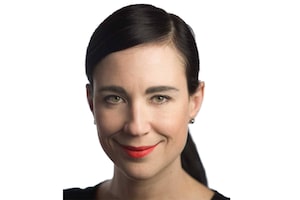
Forensic officers survey the area outside the home of one of the stabbing victims in Weldon, Sask., on Sept. 5.Sara Hylton/The Globe and Mail
The chief coroner of Saskatchewan has ordered two separate public inquests into the stabbing rampage earlier this month: one into the deaths in the James Smith Cree Nation and nearby village of Weldon, and the other into the death of the accused killer, Myles Sanderson, in police custody after his arrest.
Saskatchewan’s chief coroner, Clive Weighill, said that with both suspects dead, and no opportunity for a criminal trial or court process, there is a need for a “methodical and complete investigation” of what occurred.
“Without a public hearing of the facts, it will leave many questions unanswered from the families and the public pertaining to the circumstances leading to the deaths,” Mr. Weighill said.
Opinion: The beast of addiction in Indigenous communities remains untamed
How four days of horror unfolded on James Smith Cree Nation, where everyone lost someone
The inquests are expected to take place in the late spring or summer of 2023. Mr. Weighill said he intends to have the juries comprised entirely of Indigenous people, to ensure people on the First Nation feel comfortable with the results. He said the inquests will take place as close to the scene of the deaths as possible, which could include being held on James Smith.
A coroner’s inquest is a public venue where a jury hears testimony from witnesses to determine facts around a death or deaths, and can make recommendations on how to prevent similar situations in the future. Inquests are not criminal proceedings, and do not find fault.
The announcement was made exactly two weeks after Mr. Sanderson was arrested along the side of a Saskatchewan highway, after an intensive four-day manhunt and high-speed chase.
He has been identified as a suspect in a stabbing rampage that left nine victims dead on the James Smith Cree Nation, and another man slain in the nearby town of Weldon on Sept. 4. Eighteen people were also injured in the rampage, some very seriously.
Myles’s brother, Damien Sanderson, 31, has also been identified as a suspect in the stabbings. He was found dead near one of the crime scenes the day after the attacks, suffering injuries RCMP said at the time were not believed to have been self-inflicted.

People hold candles at a vigil in front of City Hall in Prince Albert, Sask., on Sept. 7, to honour the victims of the mass stabbing rampage.Heywood Yu/The Associated Press
Mr. Weighill said “very preliminary autopsy” results show that Myles Sanderson, 32, did not die of blunt force trauma.
“This is very, very preliminary, but that’s the best I can give you right now.”
He said pathology and toxicology reports will not be completed for several months, and won’t be released to the public until they are presented at the inquest. There, as part of its work, the jury will determine Mr. Sanderson’s cause of death.
In response to a question from a reporter, Mr. Weighill said he wanted to release that “one preliminary fact” that blunt force trauma had been ruled out, addressing possible concerns Mr. Sanderson was injured by police.
“The last thing we want is to give out some preliminary information, and then the witnesses at the inquest give different information and now we have a real quagmire of ‘What really did happen?’ ” he said.
RCMP have said that some of the attacks were targeted, and others appeared to be random. Victims of the attack included both of the men’s in-laws.
Both Damien and Myles Sanderson were from James Smith Cree Nation, and well-known in the community where the violence occurred. Myles Sanderson was on statutory release on a prison term at the time, and had been wanted since the spring for breaching the conditions of his release for failure to report to his parole officer.
The role Damien Sanderson played in the violence has remained a significant question for the community, and for those who knew the brothers.
Vice-chief Alvin Moostoos, who lost his cousin Lana Head, 49, in the attacks, said the First Nation has asked RCMP for a timeline of the events, without details, as a way to help the community heal.
”Right now we’re knocked down,” said Mr. Moostoos, whose brother was also injured in the attack. “But we will get back up and we’ll get back up with pride when our community comes together.’’
Two weeks after the rampage, Elder Ed Stonestand said people in the community are still afraid, locking their doors and even moving furniture against entrances to their home while they sleep.
“It’s still real. It’s still terrifying. It’s still hard,” said Mr. Stonestand, who also goes by his spirit name, White Lightning Thunderbird.
“A lot of hurt you can feel in this community. A lot of it. Wherever you go. And people have no trust, but they’re trying to come out.’’
With a report from The Canadian Press
 Jana G. Pruden
Jana G. Pruden